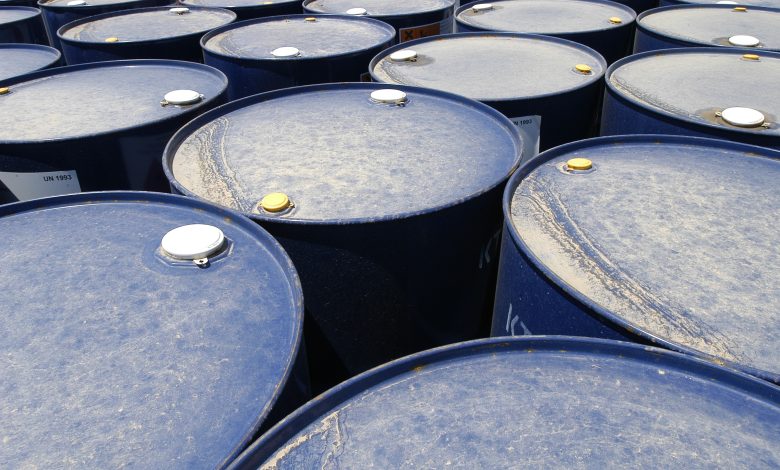
Lead Image: Multiple blue oil barrels, credit: iStock
Crude oil is one of the most important resources we have ever discovered. Oil and the many products made from it have literally and figuratively transformed the world beyond all recognition.
However, as we are constantly reminded, crude oil is not in infinite supply. After all, it took millions of years to “brew”.
Estimates vary, but if our current consumption continues apace, we may well see a time in the near future when it is completely exhausted. But, are such claims true? Have we reached what is commonly referred to as “peak oil?”.
Or, perhaps, just perhaps, we are looking at the problem from the wrong angle?
But, before we get into the weeds about the future of oil, let’s spend a little time discussing the nature of a “finite” resource.
Are natural resources actually finite?
Humans like to build stuff. We’ve been doing it for as long as our species has existed, and will continue to do so into the distant future.
Making stuff needs materials, and depending on what we are making, and how much of it, this can consume large amounts of that raw resource(s). For any product you can think of, somewhere in its supply chain raw materials have been extracted at some point and “used up” in the final product.
As more and more stuff is made over time, it would seem logical that there must be a point when the supply of any material is used up? But is this actually true?

How you think about this might, ultimately, all come down to whether you are a pessimist or an optimist at heart.
The former will adamantly believe that because there is only a limited amount of stuff humans could ever get our hands-on (like the entire mass of the Earth, say), then resources must, by definition, be limited.
This is especially true if our consumption of a material exceeds the rate of its replenishment. It is this fact basically determines if a resource is considered “renewable” or not.
The more optimistic at heart, however, realize that there is a big universe out there full of all the potential sources of stuff we could ever need. If we ever did run out of something like copper on Earth, we could, with enough effort, “pop-out” to space and get some from another planet or asteroid.
Of course, this “space stuff” is also be definition limited, but it is such an enormous quantity that it is, effectively, infinite. All we need to do is go out there and get it.
Until such time, however, we will need to make do with what we have here on Earth. Thankfully we humans have a great knack for getting better at doing things over time.
When required of us, we have managed to find ways to use stuff more efficiently, find alternatives that are just as good, or, indeed, develop ways to recycle or recover stuff from other stuff if needed. We have also found ways to use materials for entirely different purposes from what we are used to using something for.
Take gold, for example. For most of the time that humans have been able to extract and refine it, gold has mostly been used as jewelry or as a means of exchange. With the advent of the electronics age, however, gold was found to also be a fantastic electrical conductor.
While this does, obviously, increase the relative consumption of the metal, humans have found ways to use it more sparingly over time, or use alternatives instead. We have even found new sources for this precious metal once thought impossible — “fools gold”.
Not only that, but we have also devised ways to recover gold from old used electronics. So, while gold, as a resource, is being “used up”, in one sense, it is not being destroyed, per se.
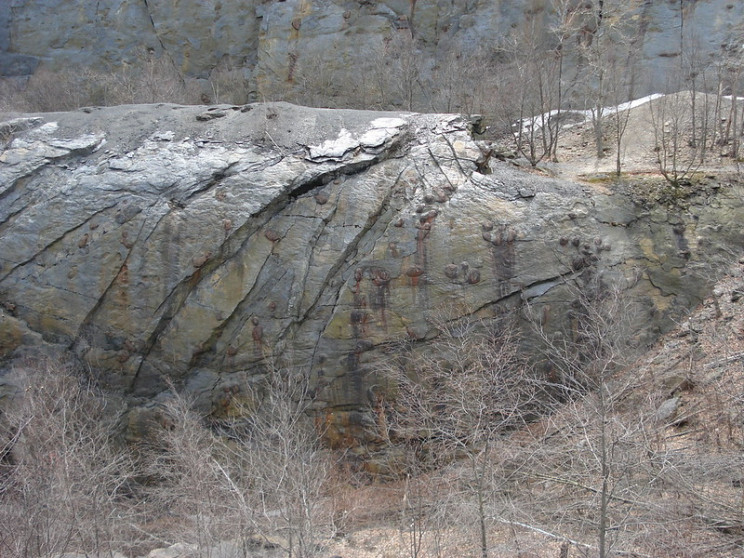
It is simply being “stored” in the stuff we make it from. Theoretically, we could recover it all in the future if we wanted to.
So, for all intents and purposes, gold is effectively in infinite supply, albeit rare. The same is probably true for things like crude oil too.
In reality, what people mean when they say a resource is “running out” is that it will become more expensive or take more energy to remove and process than it is worth — or that so little can be extracted that it is not worth the effort — not that it will literally be gone never to be seen again. This is also true of crude oil.
Unless its products are combusted, crude oil is “stored” in the form of things like plastic and plastic bags. In a future where crude oil becomes restrictively expensive to extract, could we see a future where landfills become a source of hydrocarbons for fuel?
Amazingly, this is not pure science fiction. Some researchers are already working on ways to convert plastic bags back into oil. If ever made economically viable, our tendency to bury our old trash could, perhaps, be thought of as a way of “saving” potential fuel for the future.
A fascinating thought.
But what about gold in space probes, satellites, etc? While Earth-derived material is “lost” in a sense when fired off into space in the form of probes, even the stuff on those could be recovered in the future if we put our minds to it.
On the subject of chucking stuff into space, some new innovations, like kinetic launchers, are currently being developed. If successful, this could “ease” the pressure on raw materials needed to make rockets.
The main thing to understand is that resources are only really as limited as our imagination. After all, mass (and energy) can neither be created nor destroyed, only converted. Even processes like nuclear fission, or indeed fusion, could, theoretically, be reversed, although it would take a lot of energy to do so.
So long as the investment of energy, and effort, is deemed profitable in some way, of course. There would be little point in consuming more energy in creating a potential fuel if were to not get as much of it. You need to get a return on your investment.
But there is even more to it than that. Even the mass of our planet is not constant either. It actually changes daily.
But, how and why?
Earth, and other planets, act like giant kinds of vacuum cleaners as they travel around the cosmos. Asteroids, space dust, and the odd comet all get “eaten” by Earth over time.
According to some estimates, Earth “grows” by around 43 tonnes every single day. Great news right?
But wait, it is a little more complicated than that. The Earth also losses mass over time too — mostly from its “leaky” atmosphere. The Earth’s enormous mass does a great job of keeping a thin veil of gas around its crust, but it is not perfect.

Lighter elements like hydrogen, helium, and oxygen are continually escaping into space. This is compounded by the constant “ripping” away of gases from the Earth thanks to things like the solar winds. As a consequence, Earth loses several hundred tons of mass every day — a net loss.
Don’t fret though, it will take many trillions of years for Earth to completely “evaporate” at this rate. By that time, the Sun (and Earth) would be long dead anyway.
But what about “raw” organic resources like trees or animals? If we make a species extinct through overconsumption, surely that would mean that resource is lost forever?
Perhaps not. Plants are a little simpler as so long as we have access to viable seeds, we could, theoretically, bring a species back from the dead. For animals. of course, things are a little more complex.
So long as we have access to some viable DNA of a creature in question, we could, using bioengineering, recreate them too. Scientists, for example, are currently attempting to “de-extinct” some animals, like the Whooly Mammoth.

More interestingly though, humans have even found ways to create artificial versions, or alternatives, of “living” natural resources. Synthetic meat is a prime example.
We’ll let you decide if such things are technically the same as the original or not.
So, are resources limited? By definition, technically yes, but practically, no. Pedantic perhaps, but always bear in mind that raw resources are only ever changed in form, not destroyed when we use them — from the perspective of the conservation of mass.
The technicalities of reversing chemical reactions aside (think compounds as opposed to mixtures and elements), we can never really run out of anything, ever. All we would need to do is devise a way to recover or “reconvert” something to get a raw resource back in the future.
But whether such a process is developed, or not, ultimately comes down to its cost-to-benefit.
How much oil is left in the world?
Estimating the remaining oil reserves of the planet is notoriously difficult, and frankly, subject to constant change. The reasons for this vary but are primarily dictated by our technological ability to exploit oil reserves in the first place and also the difficulty of estimating future demand.
That being said, at current consumption, we have by some accounts an estimated 47 years, give or take, of oil left to be extracted. That equates to somewhere in the region of 1.65 trillion barrels of proven oil reserves. Other sources up this estimate a bit, but most agree we have around 50 years left, give or take.
For reference, a barrel of crude oil is about 42 gallons or 191 liters.
With regards to other fossil fuels, we have an estimated 53 years of natural gas, and 114 years of coal left to rip out of the ground.

While that sounds like a hell of a lot, estimates of 47 years are based on oil consumption being maintained at around 35 and half billion barrels a year, or 97 million barrels of oil a day. Based on the 2016 world population that works out at around 5 barrels per person per year, or 0.5 gallons per person, per day.
The main producers of oil to date include countries like Venezuela who have around 18 percent of the world’s share of oil, Saudi Arabia with around 16 percent, Canada with 10.5 percent, Iran, and Iraq with 9.5 percent and 8.7 percent respectively.
Oil has various uses once extracted, but the vast majority is distilled to make liquid fuels like gasoline or is used to make plastic or chemicals. So long as societies around the world maintain their demand for fuel, plastic, and other stuff made, in part, from crude oil, an estimate of 47 years is probably quite conservative.
Especially as the global population, and demand, rises over time.
However, if the global push for decarbonization is accelerated, or indeed successful, this estimate will prove to be a gross underestimate of remaining reserves.
Another problem with estimations of remaining oil reserves is the fact they are necessarily blind to what we don’t know. Potential new stocks of oil are found all the time.
It is also important to note that global proven reserves have increased over time. This, as we previously touched upon, is mainly a consequence of improved technology and extraction methods that have made previously unexploitable oil reserves economically and physically viable for extraction.
As oil becomes harder and harder to extract, and while demand remains high for oil, improved and innovative methods to extract oil are bound to be investigated and mastered. For example, directional drilling, or the ability to direct a boring head subsurface, was once thought too challenging to make economically viable but is now pretty much standard practice.
It is highly likely that something equally as innovative will be devised in the future, so long as consumer demand remains high enough.

But more on that later.
Will we ever run out of oil?
Before we answer this question we’ll need to expand on the term “proven” we mentioned earlier. This is important to understand as it will help us honestly address whether or not oil will ever run out.
“Proven” oil reserves are those oil reserves that any given region can theoretically extract based on the infrastructure they have in place or plan to have in the near future. This is obviously dependent, as we previously stated, on the oil extraction methods and technology.
However, it is important to note that any oil left in already tapped oil reserves is not necessarily useable. Often termed “heavy” or “sour” oil, this stuff is pretty poor quality.
It is also not always in a liquid form and can contain large amounts of contaminants like sulfur.
Sulfur is a big deal as it is very corrosive to steel, which is obviously not good news for things like refineries. Sulfur-rich oil is very complex and energy-intensive to process which obviously increases the cost of bringing it to market.
One such material is bitumen. This is a very viscous (sticky) low-grade form of crude oil that can be distilled to make petroleum.
It can also be used “as is” as a binder for many other things like asphalt, roofing products, damp-proofing, etc.
It is so sticky that the Canadian Association of Petroleum Producers (CAPP) often compares it to “cold molasses”. Producers like the CAPP have greatly improved their technological capacity over the past few decades which, by extension, has necessarily increased Canada’s proven reserves as a consequence.
Other technological developments like hydraulic fracturing (fracking), have also contributed to increasing the world’s proven reserves despite an increase in global consumption (and attracting controversy).
Another more recent innovation is our ability to process and extract shale oil, more specifically a material called kerogen (a waxy mixture of hydrocarbon compounds). This tends to be found within shale deposits and needs to be heated to around 932 degrees Fahrenheit (500 degrees centigrade) to extract and process.
This process converts the solid kerogen into something similar to oil. What’s more, there is an absolute glut of this stuff in places like the USA.
According to some estimates, there are “trillions” of barrels of shale oil in the U.S. alone. However, the actual energy return on energy invested (EROEI) to extract and refine shale oil is so poor that there has been no serious commercial exploitation of oil shale to date.
Another important term to get to grips with is “technically recoverable resources“, or TRR for short. This is used to refer to those oil reserves that can be extracted using current methods and technology but may not be profitable to do so. In other words, the oil can be pulled out, but any company doing it will likely lose money doing so — making it pointless.
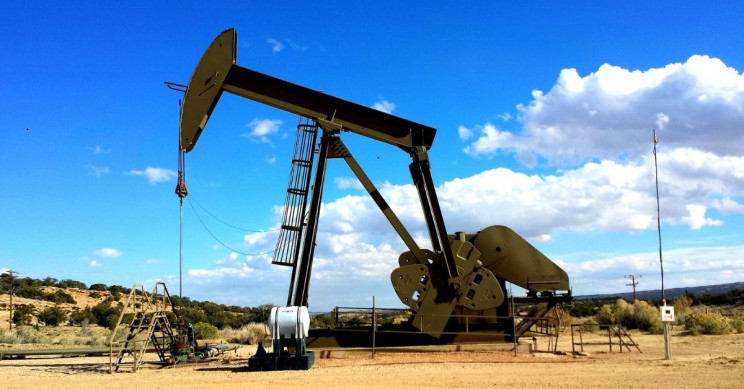
So why would they bother?
As it happens, according to the Energy Information Authority (EIA), the United States has somewhere in the region of 344 billion barrels of TRR oil. On the other hand, it has only 42 billion barrels of “proven” reserves.
Technically recoverable oil is also liable to greatly fluctuate in quantity.
“Estimates of TRR are highly uncertain, particularly in emerging plays where relatively few wells have been drilled,” explains the EIA. “Early estimates tend to vary and shift significantly over time because new geological information is gained through additional drilling, because long-term productivity is clarified for existing wells, and because the productivity of new wells increases with technology improvements and better management practices.”
By way of comparison, the amount of technically recoverable oil was around 143.5 billion barrels in 1990. Current EIA figures effectively double this today.
“Technology and geologic knowledge increased faster than U.S. production, therefore increasing estimates of technically recoverable resources through time,” explains Scott Lauermann, a spokesperson for the American Petroleum Institute.
“You cannot take today’s estimates of technically recoverable resources and estimate when we will ‘run out’ because those estimates are based on today’s technology and known formations, not tomorrow’s.”
But, like anything in life, you only know what you know. Potentially there is an even larger amount of undiscovered technically recoverable resources, meaning resources the U.S. Geological Survey predicts are there.
“Undiscovered resources are those that are estimated to exist based on geology, geophysics, geochemistry, and our familiarity with similar basins and rock formations. They have not yet been proven to exist via drilling,” explains Alex Demas, a spokesperson for the USGS.
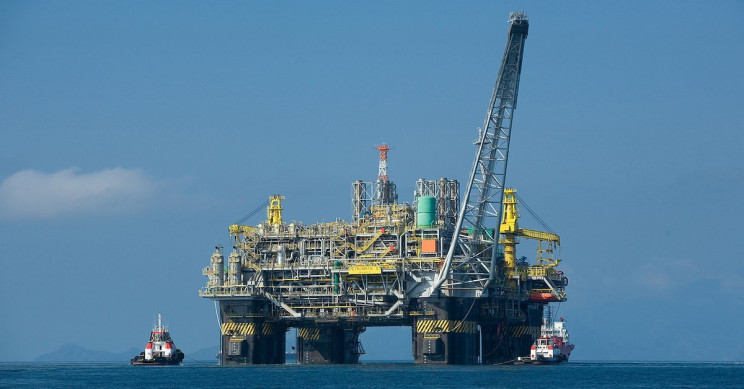
Who knows, there could be an effectively unlimited supply out there. We just don’t know it yet.
Will we ever use up all the world’s supply of oil?
In short, no. We’ve explained the main reasons above, but there is another factor to consider — the relative rarity of a resource.
Think of the most valuable things you can think of today. What was your answer, gold? Platinum? Silver? Diamonds?
All good suggestions, and things that carry a relatively high price tag due to their rarity (though silver is arguably heavily underpriced). These metals are also valued as “stores of value” in and of themselves of course and have been so for a very long time.
But, there is something that is even rarer than these — painite.
Painite, believe it or not, is the rarest gemstone on the planet. It is also the rarest mineral on the planet. It even has a Guinness World Record to prove it.
After it was first discovered in Burma in 1951, there existed only 2 or 3 specimens of Painite for the next five decades. Although more than 1,000 specimens have now been recovered, most of this material isn’t facetable so can’t be used as jewelry.
For this reason, painite is one of the most valuable materials on the planet — currently around $50 thousand per carat. For precious gems, a carat, in case you are not aware, is a unit of mass used for measuring the weight of diamonds and other precious stones. It is equal to 200 mg or 0.00643 troy oz.

But, there is something even rarer that makes this price tag seem like a bargain — antimatter.
Antimatter takes vast amounts of energy to create, and can only be made synthetically at present. The production also requires some very specialized equipment that can only produce around 10 billionths of a gram per year.
For this reason, antimatter is widely considered the most expensive thing by weight on Earth, costing around $62.5 trillion per gram.
All very interesting, but what does this have to do with the “price of fish“, or rather oil? Let us now conduct a quick thought experiment.
Let’s jump forward in time about 50 years, or so. All proven oil reserves have been used up, and now solutions have been found to tap the technically recoverable ones (or perhaps they have also been tapped).
If from all the oil that ever existed we are suddenly left with only 1 single bucket of the stuff, what would it cost to use it? So long as it is still valued as a thing, and considering the fact it is now incredibly rare, it would probably be exorbitantly expensive to buy.
If we use some of the figures above for the most valuable substances on the planet, it would probably be in the order of millions to billions for such a small amount.
With such a price tag, and so long as there is a demand, and customers are willing to pay to have it, you can more or less guarantee some bright spark will find a way to supply it. But, at a sky-high price tag we see in things like precious metals, would anyone in their right mind distill it and use it in their car? (assuming combustion engines are still a thing).
Or would they be more likely to display it, perhaps, contain it in vials and wear it as jewelry? Who knows, we might see a future where diamonds are replaced with tiny oil vials? “Oil is a girl’s best friend,” certainly has an interesting ring to it.
While gold and silver are consumed in things like electronics (despite being considered “precious”) this is because they are excellent electrical conductors when compared to cheaper alternatives. With regards to oil (and its derivatives), there are viable alternative fuels around that work just as well, if not better.
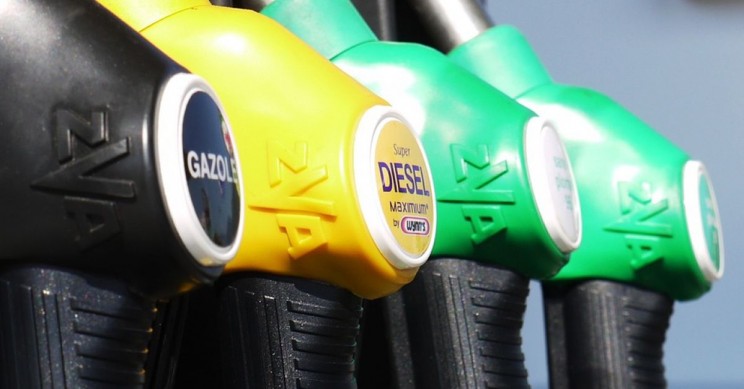
But, we are getting a little ahead of ourselves. Crude oil supplies may never get close to being exhausted anyway.
As oil becomes harder and harder to extract, and its price inevitably rises, we should reach a tipping point where alternative fuels suddenly become much more attractive.
And people will vote with their feet and wallet.
Already, other modes of transport, like electrical vehicles, are often the cheaper option to run when compared to an internal combustion engine (assuming the electricity is generated using non-fossil fuels of course). As the price of gasoline goes up, this will become even more pronounced.
So if, and likely when, oil begins to become even more restrictively costly in the future, consumers will increasingly shop around for alternatives. If this doesn’t happen, which is unlikely, then innovations will soon appear to use fossil fuels ever more efficiently.
Like, for example, innovative ways to burn the fuel more efficiently — like transient plasma ignition. Who knows, we may even have viable nuclear reactor-powered cars?
So, will we ever run completely out of oil, to the point where there is none at all? In short no, it is physically and economically not possible.
Crude oil will only continue to be extracted so long as it is profitable to do so. Both real and artificial pressures on the industry (like environmental regulations, taxes, etc.) will inevitably see us reach a point where oil becomes too expensive to use as fuel or as a raw material, long before resources even get close to being exhausted.
It’s just a matter of time.
That is unless, of course, some new mega resource of the stuff is found. But, the drive for decarbonization will likely seal crude oil’s fate in the long run.
We’ll all just have to wait and see.





